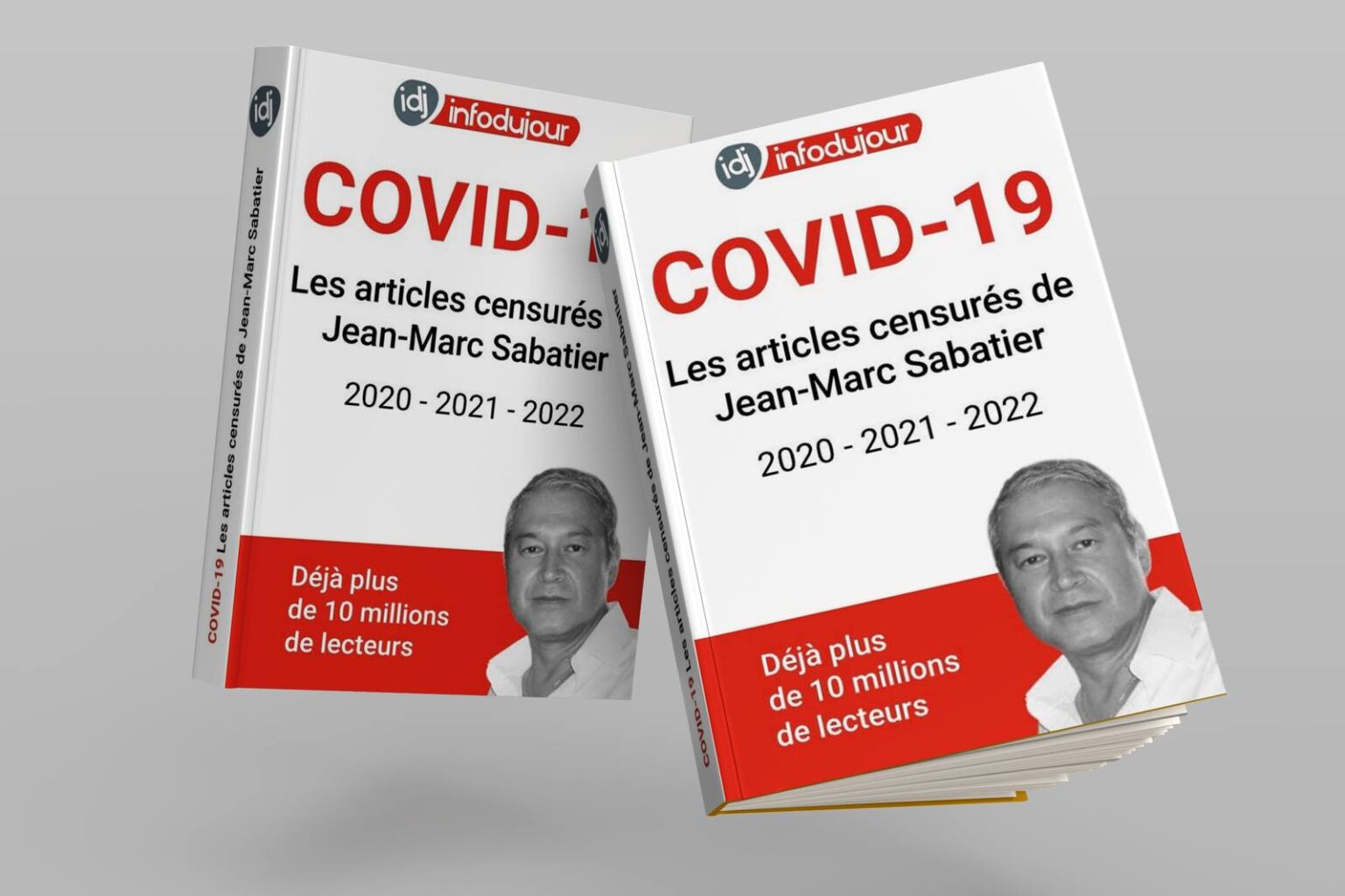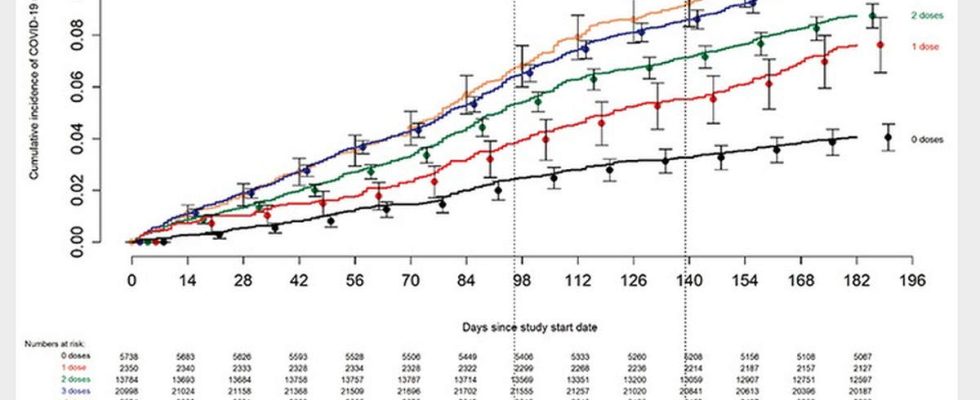A recent study from Cleveland Clinic, aiming at knowing if bivalent vaccines protect against Covid-19, confirms what Jean-Marc Sabatier* said in his article of August 2021 entitled: “the dangers of the third dose”. Explanations.
A study published in “preprint” on the MedRxiv website entitled “Effectiveness of bivalent vaccines [coding for two distinct spike proteins] against Covid-19 disease” has been the subject of much ink since its publication in December 2022. Pro- and anti-vaxers have been battling it out on the Internet with arguments that are often unconvincing. What is the issue?
Higher risks
The Cleveland Clinic is an American university medical center based in Ohio. It is regularly ranked as one of the best in the United States. A team of researchers wanted to evaluate the effectiveness of bivalent vaccines, used as booster doses, to fight Covid-19. The study involved 51,011 clinic employees and observed them for 13 weeks after vaccination.
The study states that both natural immunity and vaccine-induced immunity protect against COVID-19, but that both forms of immunity fade over time. The way to assess vaccine efficacy, therefore, is to measure the immunity of individuals over time since vaccination.
For researchers, the arrival of the Omicron variant in December 2021 has significantly altered the landscape of immune protection. Previously infected or vaccinated individuals were no longer protected against COVID-19.
An edifying graph!
To confirm the study, the researchers produce a graph. They write: “The risk of contracting COVID-19 also varied with the number of COVID-19 vaccine doses previously received. The greater the number of vaccine injections, the greater the risk of contracting SARS-CoV-2 and COVID-19.
They state, “Day zero was September 12, 2022, when the bivalent vaccine began to be offered to employees. Point estimates and 95% confidence intervals are halved along the x axis to improve visibility.”
The “facilitating” antibodies

This is exactly what Jean-Marc Sabatier suggested in an article published on August 11, 2021 on infodujour, an article that has been censored but can be consulted on contre-pouvoir.info. What did Jean-Marc Sabatier say?
That there are several types of antibodies.
- The “neutralizing” antibodies that will fight and neutralize the virus. These are the ones that are most familiar to the general public. Their production is desired during a vaccination;
- Neutral” antibodies that will recognize the Spike protein of SARS-CoV-2, involved in the infection of cells, but will not protect;
- The “facilitating” antibodies which, contrary to the “neutralizing” antibodies, will promote the infection of the cells by the virus. These are the antibodies that must be avoided during vaccination. However, all current vaccines, based on the Spike protein of SARS-CoV-2, produce these three types of antibodies. Hence the difficulties that we see after vaccination of some patients. Hence also the worrying vaccination strategy of the recommended booster shots, including in France, for patients suffering from comorbidities (obesity, diabetes, hypertension, etc.).
In a previous article, we saw indeed that the coronavirus of the FIP (feline infectious peritonitis) of the cat presented strong analogies with the coronavirus SARS-CoV-2 responsible for the Covid-19 in humans. We have also seen that attempts to vaccinate cats with an avirulent strain of FIP not only fail to protect vaccinated cats, but, on the contrary, promote infection and death in cats subsequently exposed to a virulent strain of FIP virus.
The cure is worse than the disease
These data show the existence (in this case) of a phenomenon called “ADE” (antibody-dependent enhancement). In this mechanism, “facilitating” antibodies are present. These antibodies bind to the FIP virus and facilitate the infection of cells by the virus. Indeed, phagocytic cells (monocytes, macrophages, dendritic cells…) have a receptor (called FcgRIIa) capable of recognizing antibodies attached to the viral particle, which allows the infection of these cells by internalization of the virus-antibody complex.
ADE in respiratory infections is included in a broader category called ERD (“enhancement of respiratory diseases”) which also includes non-antibody based mechanisms (such as cytokine storms and cell-mediated immuno-pathology) that promote the infectious process and deleterious effects of the virus.
It has been clearly observed that after vaccine boosters, individuals are more likely to be infected with SARS-CoV-2 than those who did not receive these booster shots.
The “ADE” (or even “ERD”) phenomenon exists with current SARS-CoV-2 variants. It appears that these multiple booster shots increase the proportion of “facilitating” antibodies, which leads to an opposite effect to that intended. The cure is then worse than the disease.
*Jean-Marc Sabatier, Director of Research at the CNRS and Doctor in Cell Biology and Microbiology. Editor-in-Chief of the international scientific journals: “Coronaviruses” and “Infectious Disorders – Drug Targets”. He is speaking here on his own behalf.

